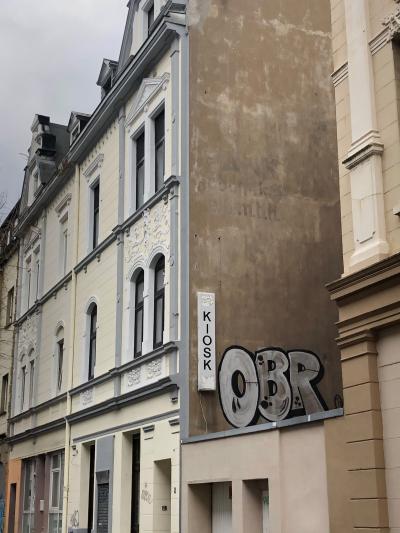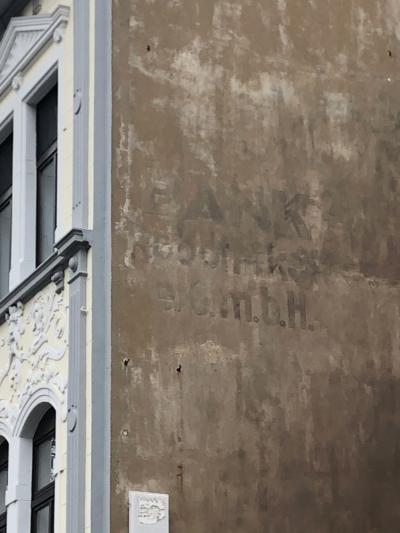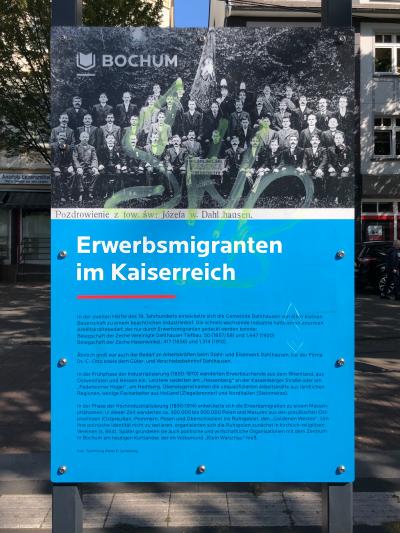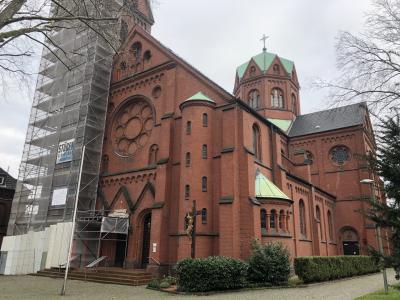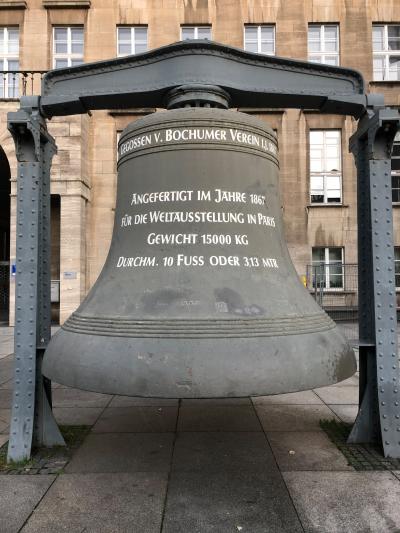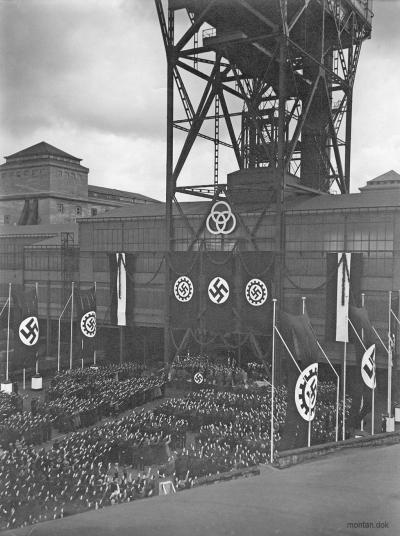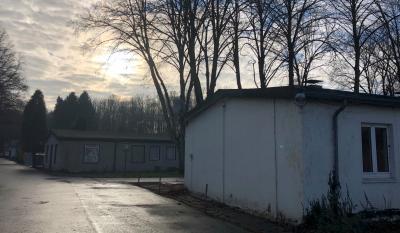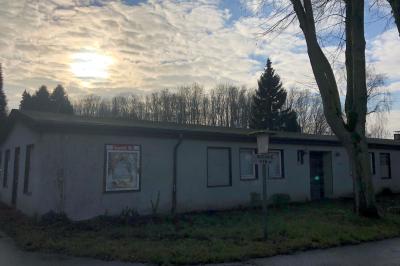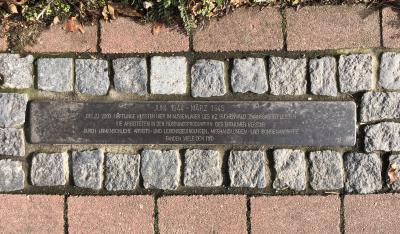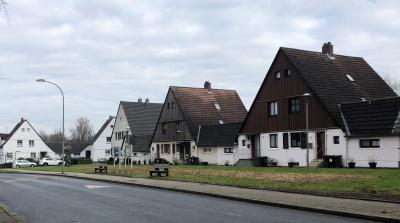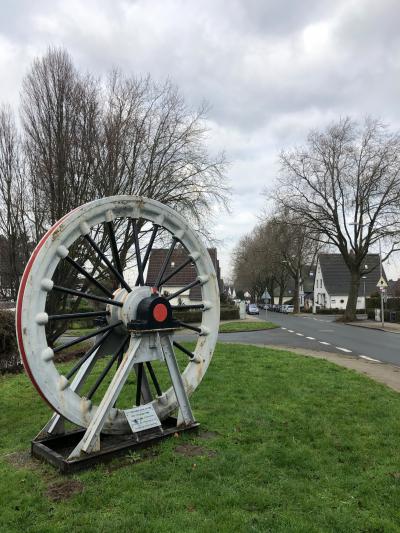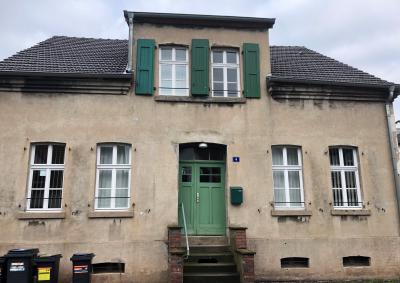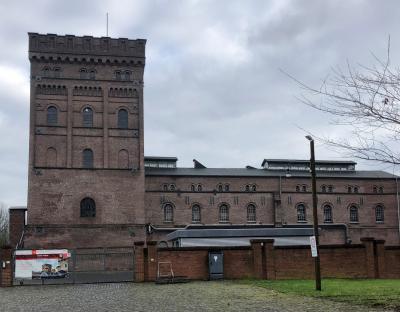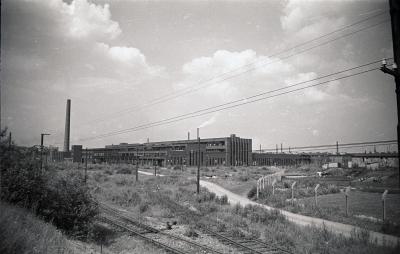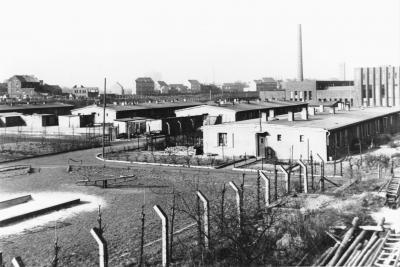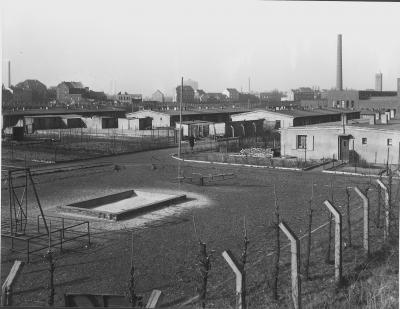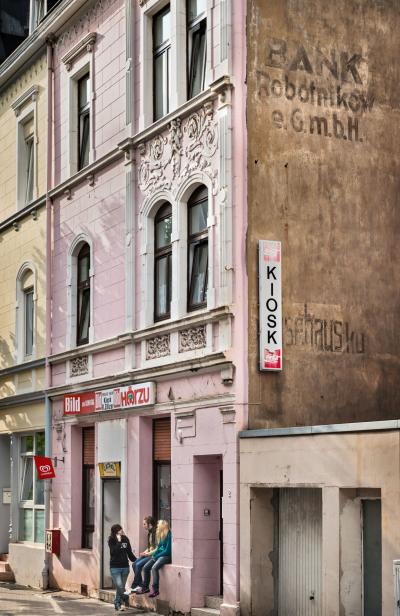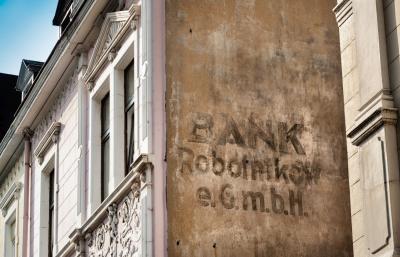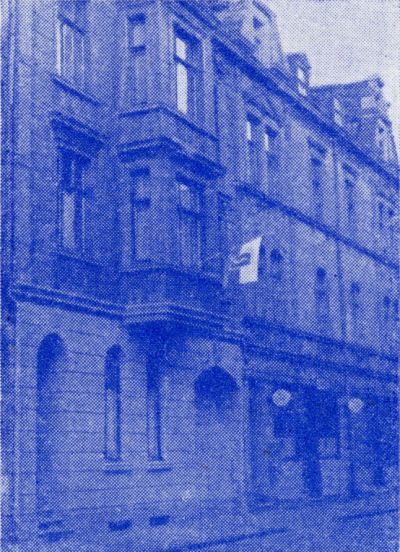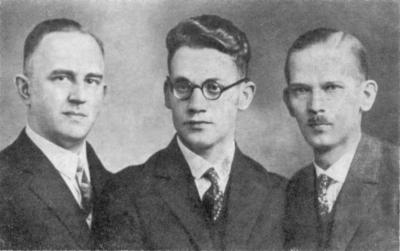About Polish miners, “Polish mines” and “Workers from the East” – A look back at 100 years of the history of Polish workers in Bochum (1871-1973)
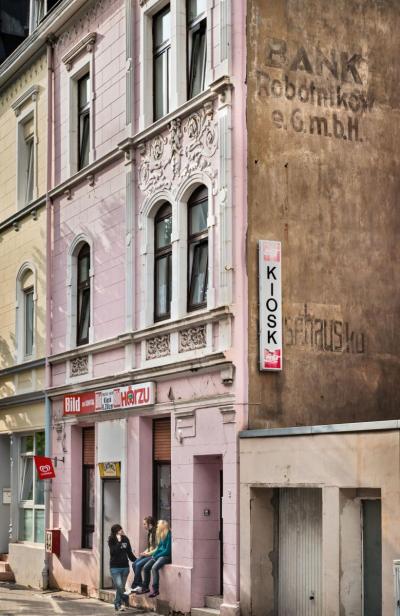
Polish forced labourers are mentioned repeatedly in the sources and eye-witness accounts of the Nazi forced labour in Bochum. Evidence of Polish prisoners can be found in the first prisoner transport which went from Auschwitz concentration and extermination camp via Buchenwald before arriving in Bochum on 21 June 1944 with 446 people on board.[32] Eye-witness accounts mention Polish forced labourers both in grenade and bomb production, which was carried out by female forced labourers, and in the deployment of foreign workers in the projectile pressing shop in Stahlhausen.[33] Just what draconian punishments those forced into labour for the Nazis had to suffer in Bochum can be seen from the fate of a Polish farm labourer in Wattenscheid: He was hanged because he is said to have made advances to a citizen of the German Reich.[34] According to a report from the President of the District Court in Bochum of 20 June 1941, the execution is also said to have taken place in public in the presence of all the Polish forced labourers.[35]
Overall, the forced labourers deployed in Bochum suffered difficult, even sometimes slave-like working conditions as well as inhumane living conditions in most of the camps. Confidential documents from Bochum employment office reveal that inspections of the forced labourers’ accommodation and working conditions were able to identify repeated abuse, poor sanitation, insufficient food, and increased spread of disease.[36] The difficult working and living conditions resulted in the forced labourers suffering from malnutrition, diseases and physical and mental debilitation which caused countless deaths, both in the short term and over the long term. In addition, many forced labourers perished as a result of draconian punishments, including the death sentence. Because of the number of unrecorded cases, an exact figure cannot be placed on the actual number of fatalities resulting from forced labour under the Nazis. Of the 1,720 victims of forced labour who were buried in Bochum Freigrafendamm cemetery, 78 were of Polish origin.[37]
[32] Hungarian, Czech, Russian and Polish prisoners were also included in this first transport, many of them were Jews;
cf. Wölk, Ingrid: Das Außenlager des Konzentrationslagers Buchenwald beim ‚Bochumer Verein‘, p. 44.
[33] cf. Gleising, Günter: Bochums Stellung in der Rüstungs- und Kriegswirtschaft unter besonderer Berücksichtigung des Bochumer Vereins und dessen Zwangsarbeitereinsatz, p. 37 f.
[34] According to Nazi ideology, Poles were far down the “racial hierarchy” of the National Socialists; this applied to forced labourers as well. On 8 March 1940, the so-called Polish decrees came into force which defined a series of policies discriminating against Polish forced labourers, including the compulsory labelling of workers with a “P”, as well as a ban on Poles being in contact with the German population;
cf. Loew, Peter Oliver: Das Zeichen „P“, at: https://www.porta-polonica.de/de/atlas-der-erinnerungsorte/das-zeichen-p?page=1#body-top.
[35] cf. Grieger, Manfred: Zwangsarbeit in Bochum – Die Geschichte der ausländischen Arbeiter und KZ-Häftlinge 1939-1945, p. 4.
[36] cf. Bochum employment office from 14 July 1943: To all operators that employ foreign workers. Re: Abuse of foreign workers, in: montan.dok/BBA 40/492;
cf. Bochum employment office from 31 May 1944: To all companies that employ foreign workers. Re: Accommodating foreign workers, in: montan.dok/BBA 40/487.
[37] cf. municipal archive – Centre for local history in Bochum (publ.): "Wir gedenken der Opfer der Zwangsarbeit in Bochum, 1941 bis 1945, Letzte Ruhestätte:Hauptfriedhof Freigrafendamm". Edited and compiled by Ursula Jennemann-Henke, with the assistance of Angelika Karg and Angelika Schäfer – Municipal archive, Bochum 2002.
